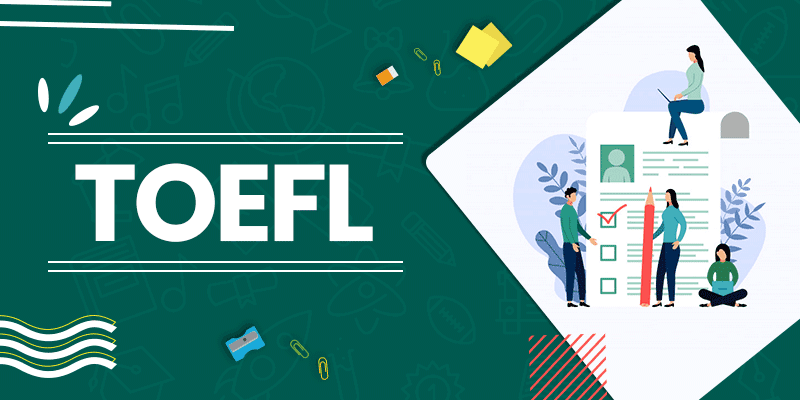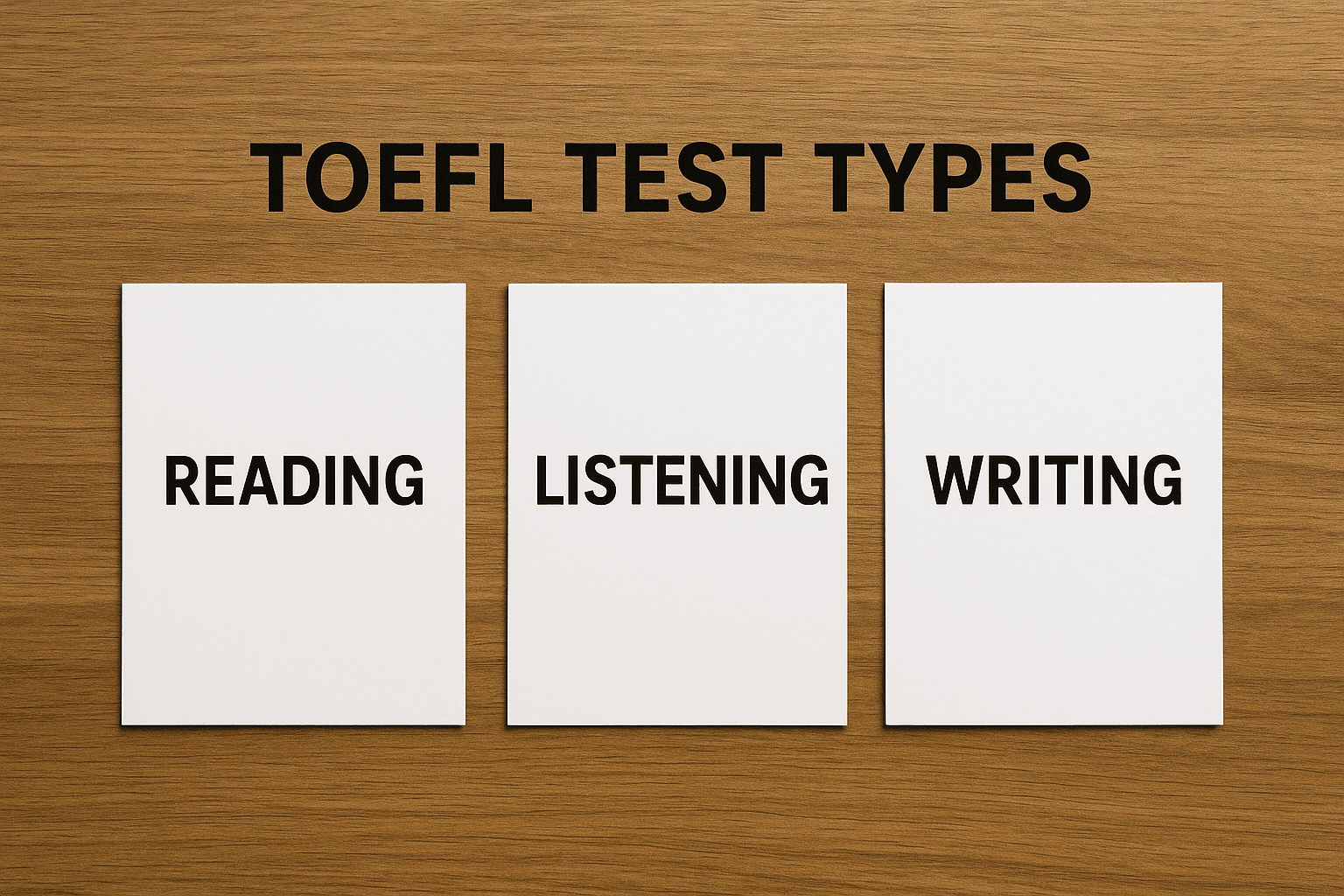Embarking on a journey to study or work abroad is an exciting prospect, filled with dreams of new cultures, advanced education, and global career opportunities. However, this path has a critical gatekeeper: demonstrating your English language proficiency. For millions around the world, the key that unlocks these doors is the TOEFL test. Accepted by over 13,000 institutions in more than 160 countries, a strong TOEFL score is your passport to success.
But preparing for such a high-stakes exam can feel overwhelming. You might be wondering where to start, what to study, and how to turn your English knowledge into a high-scoring performance. That’s where this comprehensive guide comes in. At Bolsa25 Academy, we specialize in transforming English learners into confident communicators, and we’ve channeled our expertise into this definitive resource.
This blog post will demystify the TOEFL test, breaking down everything from its core purpose and format to expert preparation strategies and time management techniques. We’ll explore the common challenges test-takers face and provide actionable solutions to overcome them. Whether you’re just beginning your preparation or looking for that final edge to boost your score, this guide will equip you with the knowledge and confidence to conquer the TOEFL.

Purpose of the TOEFL Test
Before diving into preparation, it’s essential to understand why the TOEFL test exists and who it’s for. At its core, the TOEFL (Test of English as a Foreign Language) is designed to measure the ability of non-native English speakers to use and understand English at the university level. It evaluates how well you can combine your listening, reading, speaking, and writing skills to perform academic tasks—the very skills you’ll need to succeed in a classroom where English is the language of instruction.
While it’s most famously associated with university applications, the TOEFL serves a variety of purposes for different individuals. The primary groups who take the TOEFL include:
- University and College Applicants: This is the largest group. Students applying to undergraduate, graduate, or two-year community college programs in English-speaking countries like the United States, Canada, the U.K., and Australia often need to submit a TOEFL test score as part of their application.
- High School Students: Some high schools in English-speaking countries require international students to demonstrate their language proficiency before admission.
- Professional Licensing and Certification: Many professional fields, such as healthcare and accounting, require individuals to obtain a license or certification to practice. In English-speaking regions, this process often includes proving language competency through a test like the TOEFL.
- Immigration Purposes: Government agencies in countries like Australia and the U.K. use TOEFL scores to grant visas for work or residency. It serves as objective proof that an individual can effectively integrate into an English-speaking society.
- Personal Skill Assessment: Some individuals take the TOEFL simply to get a formal, objective assessment of their English skills for personal or professional development, even without a specific application requirement.
In essence, the TOEFL test is more than just an exam; it’s a standardized benchmark trusted by institutions worldwide. It confirms that you have the linguistic tools necessary to not just survive, but thrive in an academic or professional English-speaking environment.
TOEFL Test Types
When people refer to the “TOEFL,” they are usually talking about the TOEFL iBT (Internet-Based Test). However, it’s useful to know about the different formats that exist, as this can impact your preparation and which test you should take. The primary distinction is between the iBT and the now less-common PBT (Paper-Based Test).
TOEFL iBT (Internet-Based Test)
The TOEFL iBT is the most widely accepted and administered version of the exam. As the name suggests, it is delivered via the internet at secure test centers around the world. In recent years, the TOEFL iBT Home Edition has also become a popular option, allowing you to take the official TOEFL test online from the comfort of your home, monitored by a live human proctor.
The iBT is designed to simulate a real academic environment and assesses four key skills in an integrated manner:
- Reading: You will read 2 academic passages and answer 20 questions. This section tests your ability to understand main ideas, details, inferences, vocabulary, and rhetorical purpose.
- Listening: You will listen to brief lectures and classroom discussions, then answer 28 questions. This measures your ability to comprehend main ideas, important details, speaker attitude, and organization.
- Speaking: This section has four tasks. One is an “independent” task where you express your own opinion. The other three are “integrated” tasks where you must read a short passage and/or listen to an audio clip before speaking your response.
- Writing: This section includes two tasks. The first is an “integrated” task where you read a passage, listen to a short lecture, and then write a summary of how they relate. The second is an “independent” task where you write an essay based on your own knowledge and experience, now framed as a contribution to an online class discussion.
The entire TOEFL iBT takes just under two hours to complete.

TOEFL PBT (Paper-Based Test)
The TOEFL PBT is the older, paper-and-pencil version of the test. It is only offered in locations where internet-based testing is not available. Its acceptance is diminishing, and most universities and institutions now exclusively require the iBT.
The most significant difference is that the PBT does not have a Speaking section. Instead, it consists of Listening Comprehension, Structure and Written Expression (grammar), and Reading Comprehension. Because it doesn’t evaluate spoken English, it is not considered a complete assessment of communicative ability by many institutions.
Key differences between formats
Understanding the TOEFL test format is crucial for your preparation. Here’s a quick summary of the main differences between the iBT and PBT:
- Mode of Delivery: The iBT is computer-based, while the PBT is on paper.
- Speaking Section: The iBT includes a comprehensive Speaking section, which is completely absent from the PBT. This is the most critical difference and the primary reason the iBT is preferred by institutions.
- Integrated Tasks: The iBT features integrated tasks that require you to combine multiple skills (e.g., read, listen, then speak), mirroring real academic challenges. The PBT tests skills in isolation.
- Availability and Acceptance: The iBT is the global standard, available almost everywhere and accepted by virtually all institutions that require a TOEFL score. The PBT has very limited availability and acceptance.
Our recommendation at Bolsa25 is clear: Unless you have a very specific reason and have confirmed that your target institution accepts it, you should always plan to take the TOEFL iBT. It is the premier test of academic English and the one that will open the most doors for you.
How to register online?
Registering for the TOEFL test online is a straightforward process. The entire registration is handled through the official ETS (Educational Testing Service) website. It’s best to register 3 to 4 months before your desired test date to ensure you get your preferred location and time. Here is a step-by-step guide to get you started:
- Create an ETS Account: Your first step is to visit the official TOEFL website and create a personal ETS account. You will need to provide your name, address, date of birth, and other identifying information. Make sure the name you use for registration exactly matches the name on the identification (ID) you will bring on test day.
- Select the Test and Location: Once logged into your account, you can begin the registration process. You will choose between taking the TOEFL iBT at a test center or the TOEFL iBT Home Edition. Use the search tool to find available test centers near you or to see available dates for the at-home version.
- Choose Your Test Date and Time: Browse the calendar for available dates. Test centers typically offer tests on weekends, while the Home Edition has more flexible scheduling. Select the date and time that works best for you.
- Complete Your Profile and Answer Background Questions: You will be asked to fill out some additional background information. This is also the stage where you can select up to four institutions to receive your scores for free. It’s a good idea to have your list of universities ready.
- Pay the Test Fee: The final step is to pay the registration fee. The fee varies by country. You can pay using a credit/debit card, e-check, or PayPal.
- Receive Confirmation: After your payment is processed, you will receive a confirmation email with your test date, time, location (or instructions for the Home Edition), and other important details. You can also view your registration details anytime in your ETS account.

Important Considerations:
- ID Requirements: Check the specific ID requirements for your country on the TOEFL website. Not all forms of ID are accepted, and this is a strict policy.
- Disability Accommodations: If you have a disability or health-related need that requires testing accommodations, you must apply for them and get approved *before* you register for the test. This process can take several weeks, so plan accordingly.
Preparation for TOEFL Test
A high score on the TOEFL test is not just about knowing English; it’s about knowing the test. Effective TOEFL preparation involves a strategic blend of building your language skills, understanding the test structure, and mastering time management. A well-rounded study plan is your roadmap to success.
Study materials and resources
The market is flooded with TOEFL prep materials, but not all are created equal. Using high-quality, reliable resources is crucial to ensure you are practicing with content that accurately reflects the real exam. Here are the types of resources you should consider incorporating into your study plan:
Official ETS Materials
Your preparation should always start with materials from ETS, the makers of the TOEFL. These are the most authentic resources available because they use retired questions from actual tests.
- The Official Guide to the TOEFL iBT Test: This is the most essential book for any test-taker. It provides a deep dive into every section, explains question types, and includes hundreds of practice questions and four full-length practice tests.
- Official TOEFL iBT Tests (Volumes 1 & 2): These books each contain five additional full-length practice tests. Completing all of these is one of the best ways to prepare for the real exam experience.
Reputable Third-Party Prep Books
While official materials are best for authentic questions, some third-party books offer excellent strategies, skill-building exercises, and additional practice. Books from publishers like Barron’s are often recommended for their detailed lessons on academic skills like note-taking and paraphrasing, which are vital for the TOEFL.
Online Resources and Courses
The digital landscape offers a wealth of resources. You can find practice websites, video lessons on YouTube, and forums where test-takers share advice. However, the quality can vary dramatically. It’s important to use trusted platforms.
For those seeking a structured and guided approach, an online course is an invaluable investment. At Bolsa25 Academy, our conversation-focused courses are designed to take you from beginner to exam-ready. We offer:
- Specialized Exam Prep: We have dedicated tracks for exams like IELTS, TOEFL, and PTE, focusing on the specific strategies needed for each.
- Live, Interactive Sessions: You’ll practice weekly with certified instructors and peers in small groups, ensuring personalized attention.
- Real-Life Experience: Our curriculum includes a final month of practical tasks to apply what you’ve learned and build true confidence.
- Expert Feedback: As our student Ammar Youssef noted, “Thanks to Bolsa25, I raised my TOEFL score significantly. Their tailored lessons and real-test simulations prepared me for every section of the exam.”
Explore Bolsa25’s TOEFL Courses
Importance of practice tests
Simply reading about the TOEFL is not enough. You must actively engage with the material through practice tests. They are one of the most critical components of your preparation for several reasons:
- Familiarity with Format and Pacing: Practice tests help you internalize the structure, question types, and timing of the exam. The more familiar you are, the less likely you are to be surprised or anxious on test day.
- Identifying Strengths and Weaknesses: Taking a diagnostic test at the beginning of your studies helps you identify which sections or question types are most challenging for you. This allows you to focus your study time more effectively.
- Building Stamina: The TOEFL iBT is a nearly two-hour-long exam that requires sustained concentration. Taking full-length practice tests helps you build the mental endurance needed to perform your best from start to finish.
- Simulating Test-Day Conditions: The best practice tests replicate the on-screen experience of the real TOEFL. This helps you get comfortable with the interface, the on-screen timer, and the experience of speaking into a microphone.
- Tracking Progress: Regularly taking practice tests allows you to see how your score is improving over time. This can be a great motivator and helps you know when you are ready for the official TOEFL test.
Time management strategies
One of the biggest challenges on the TOEFL is the strict time limit for each section. Many test-takers know the answers but run out of time before they can finish. Developing strong time management skills is non-negotiable.
Reading Section
- Pacing is Key: You have 35 minutes to answer 20 questions on 2 passages. This gives you about 17-18 minutes per passage. Don’t spend too much time on any single question. If you’re stuck, make your best guess and move on.
- Skim First: Before diving into the questions, spend 2-3 minutes skimming the passage to get a general sense of its topic and structure. This will help you locate information more quickly later.
Listening Section
- Effective Note-Taking: You only hear the audio once, so you can’t go back. Practice taking concise notes, focusing on main ideas, key examples, and the speaker’s tone. Don’t try to write down everything. Use abbreviations and symbols.
- Stay Focused: The lectures can be long and dense. Train yourself to maintain concentration throughout the entire audio clip.
Speaking Section
- Use Your Prep Time Wisely: You get a short preparation time (15-30 seconds) before each task. Use this time to outline a clear main point and two supporting details. Don’t try to write a full script.
- Use a Template: Having a simple structure in mind (e.g., “I agree with the idea for two reasons. First… Second…”) can help you organize your thoughts quickly under pressure.
Writing Section
- Outline Before You Write: For both writing tasks, spend 2-3 minutes creating a simple outline. This will ensure your essay is well-organized and coherent, which is a major part of your score.
- Watch the Clock: Allocate your time for planning, writing, and reviewing. For the Independent Writing task (30 minutes), aim to spend 3-5 minutes planning, 20-22 minutes writing, and 3-5 minutes proofreading for errors.
Is TOEFL harder than IELTS?
This is one of the most common questions, and the answer is: it depends on you. Neither test is objectively “harder” than the other; they are just different. The difficulty is subjective and depends on your skills and preferences.
Format: The TOEFL consists almost entirely of multiple-choice questions in the Reading and Listening sections. The IELTS has a wider variety of question types . Some people prefer the straightforwardness of multiple-choice, while others find the variety of IELTS more engaging.
Speaking Section: In the TOEFL iBT, you speak into a microphone, and your responses are recorded and graded later. In the IELTS, you have a live, face-to-face conversation with a human examiner. Some people feel more comfortable talking to a computer, while others prefer the natural interaction of a real conversation.
Accent: The TOEFL primarily uses American English, while the IELTS features a mix of accents, including British, Australian, and American.
The best way to decide is to try practice questions from both tests and see which format feels more comfortable for you.
Common difficulties test-takers face
Even students with strong English skills can find the TOEFL challenging. This is because the test evaluates a specific set of academic skills under pressure. Being aware of the common pitfalls can help you prepare for them directly.
- Unfamiliar Academic Vocabulary: The Reading and Listening passages are drawn from university-level textbooks and lectures. They contain formal, academic vocabulary that you might not encounter in daily conversation. If you don’t have a strong academic vocabulary, you may struggle to understand the passages fully.
- Strict Time Pressure: As mentioned, the clock is one of your biggest adversaries. Many test-takers feel rushed and make careless mistakes or fail to complete all the questions, especially in the Reading section.
- Integrated Skills Questions: The TOEFL is famous for its integrated tasks, which require you to process information from multiple sources. For example, in a Speaking task, you might have to read a passage, listen to a conversation about it, and then summarize the opinions. This requires excellent note-taking, synthesis, and quick thinking.
- Note-Taking Under Pressure: In the Listening, Speaking, and Writing sections, your ability to take effective notes is crucial. It’s difficult to listen to a dense academic lecture, identify the most important points, and write them down coherently all at the same time.
- Speaking Anxiety: For many, the Speaking section is the most intimidating. Speaking into a microphone to a computer, with a timer ticking down, can feel unnatural and stressful. Test-takers often freeze, use too many filler words (“um,” “uh”), or fail to develop their ideas fully.
What makes a TOEFL practice test great?
With so many practice tests available, how do you choose a good one? A great practice TOEFL test goes beyond just providing questions and answers. It should be a powerful
- Authenticity of Questions: The style, tone, and difficulty of the questions should closely match the real TOEFL. The passages should be academic in nature, and the answer choices should be tricky, with distractors that are plausible but incorrect. This is why official ETS materials are the gold standard.
- Realistic Test Simulation: A great practice test should be delivered on a platform that mimics the actual TOEFL iBT interface. This includes the on-screen layout, the navigation tools, and, most importantly, the timer. Practicing in a simulated environment reduces technical surprises on test day.
- Full-Length and Timed: It should offer a full, timed simulation of the entire exam. This is the only way to build the mental stamina and practice the time management strategies required to succeed.
- Comprehensive Scoring and Feedback: A score is useful, but detailed feedback is what drives improvement. A great practice test will provide:
- A scaled TOEFL test score estimate for each section.
- Correct answers and detailed explanations for every Reading and Listening question.
- Sample high-scoring responses for the Speaking and Writing sections, allowing you to compare your own answers.
- Ideally, for premium services, personalized feedback on your Speaking and Writing submissions from a qualified instructor.
Investing your time in high-quality practice tests is one of the smartest moves you can make in your TOEFL journey. It bridges the gap between knowing English and knowing how to demonstrate that knowledge on the exam.
In Conclusion
Conquering the TOEFL test is a significant milestone on your path to international education and career success. It is a challenging exam, but it is by no means insurmountable. Success hinges on a deep understanding of the test format, a strategic and consistent study plan, and the use of high-quality preparation materials.
By breaking down the exam into its core components—Reading, Listening, Speaking, and Writing—and applying targeted strategies for each, you can turn your weaknesses into strengths. Remember to make authentic practice tests the cornerstone of your preparation to build familiarity, stamina, and confidence. Most importantly, don’t be afraid to seek expert guidance.
At Bolsa25 Academy, we are committed to helping you achieve your goals. Our live, conversation-focused courses provide the structured support, personalized feedback, and real-world practice you need to not only pass the TOEFL but to excel. We believe in empowering you to speak English with confidence, both in the exam room and in your future academic life.
Your dream university or career is within reach. With the right preparation and a determined mindset, you can achieve the TOEFL score you need.
FAQs
The TOEFL exam is primarily for non-native English speakers who need to demonstrate their English proficiency for academic purposes. Its main purpose is to prove to universities and colleges that you have the language skills required to succeed in an English-speaking classroom. It is also used for professional licensing, immigration visas, and other professional and personal goals where proof of English ability is required.
The TOEFL exam is considered challenging, but not impossible. Its difficulty comes from several factors: the use of formal, academic English; the integrated tasks that require you to use multiple skills at once; and the strict time limits. However, hard is relative. For a student who has diligently prepared, practiced time management, and built a strong academic vocabulary, the test is very manageable. It is less a test of your raw intelligence and more a test of your specific preparation and familiarity with the exam format. With a solid study plan and the right resources, anyone can achieve a good score on this TOEFL test.
First, it’s important to know that you can’t technically fail the TOEFL. You simply receive a score for each section 0-30 and a total score 0-120. There is no official passing or failing mark set by ETS. Instead, each university or institution sets its own minimum score requirements. If your score is lower than what your target school requires, you have a clear and simple option: retake the test. You can take the TOEFL as many times as you need to, though there is a short waiting period required between attempts. Many students take the test more than once to achieve their desired score. A lower-than-expected score should be seen not as a failure, but as a diagnostic tool showing you where you need to focus more of your preparation for the next attempt.What is the TOEFL exam for?
Is the TOEFL exam very hard?
What if I fail the TOEFL?

